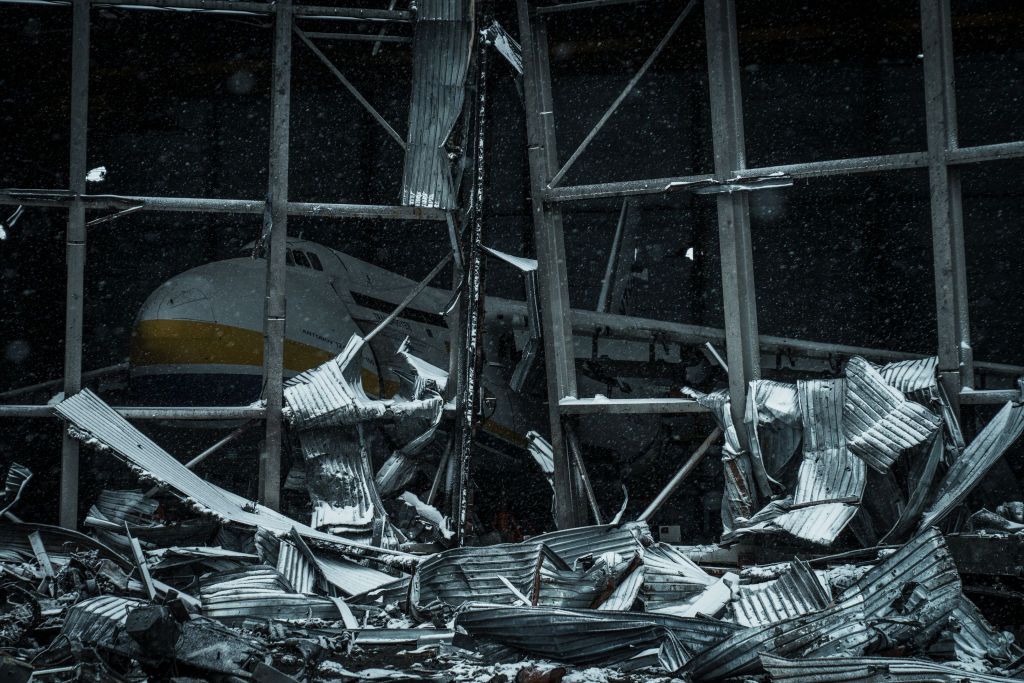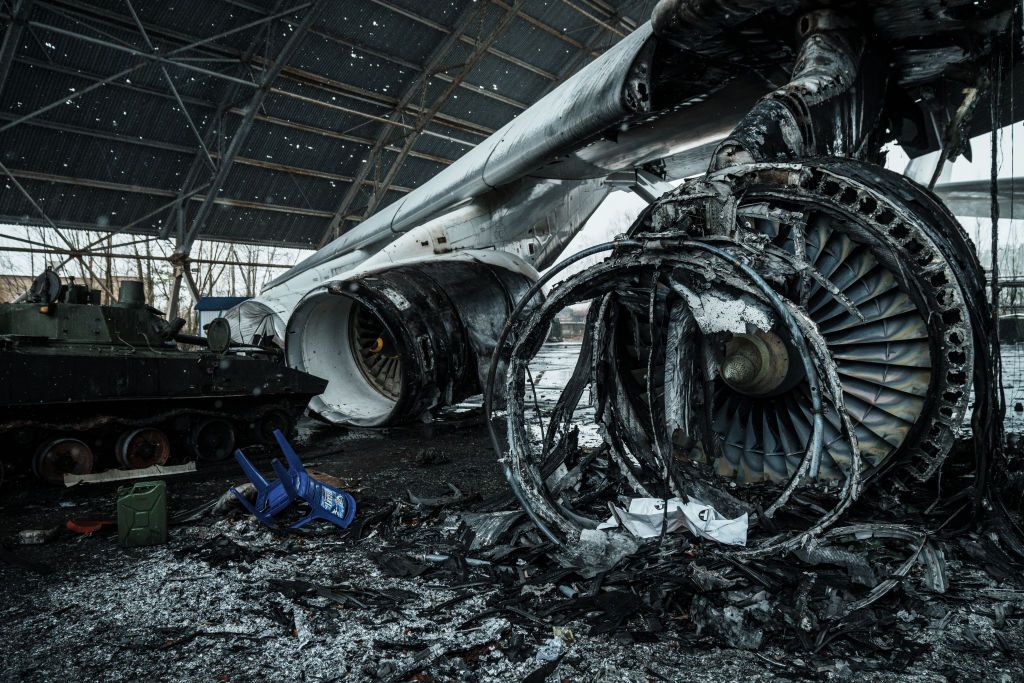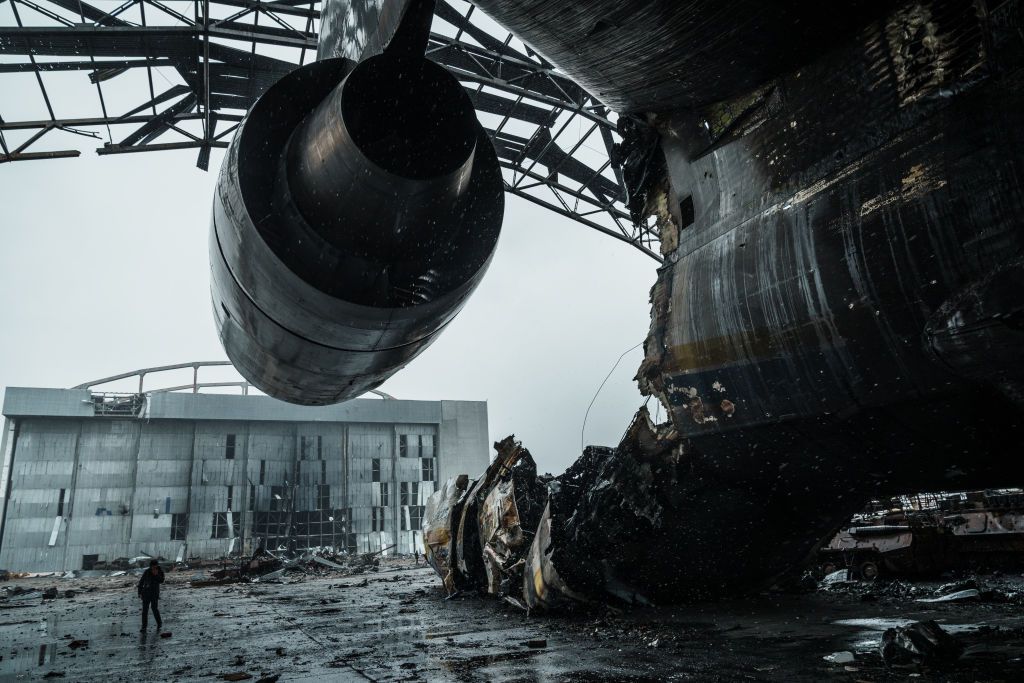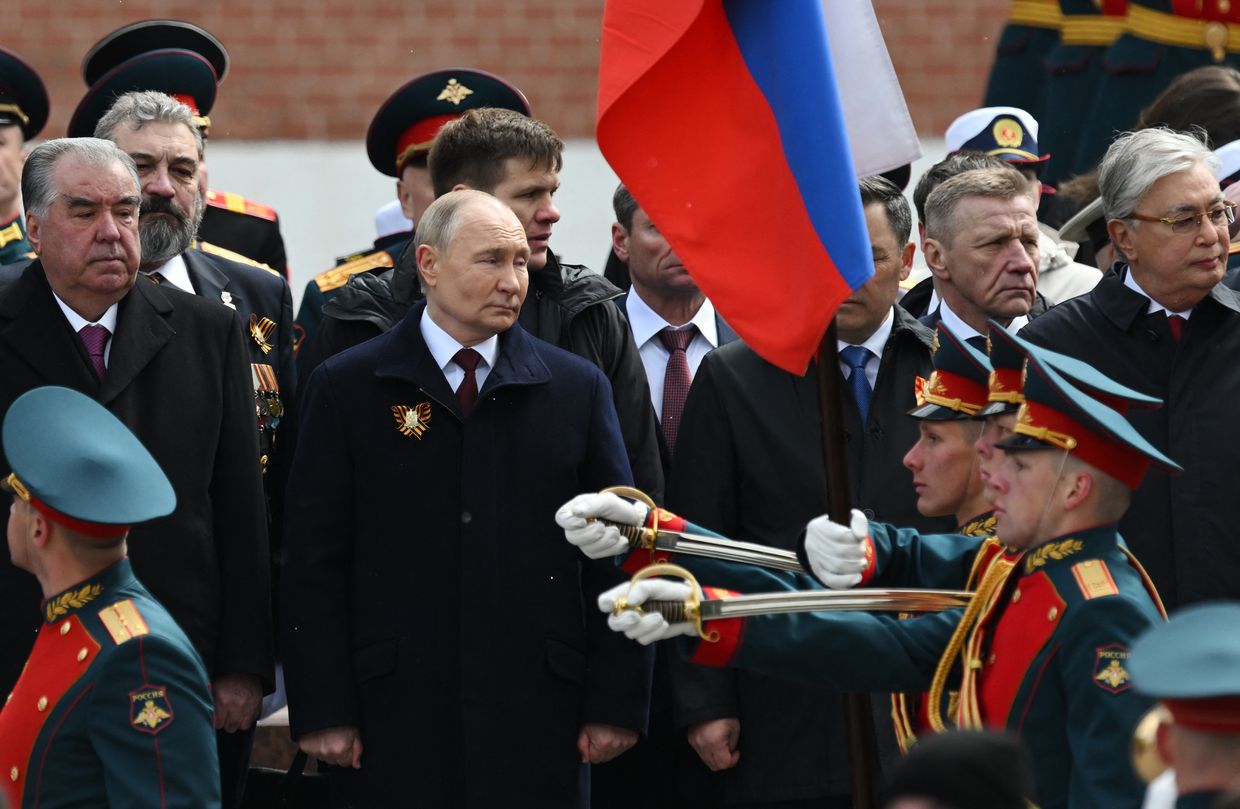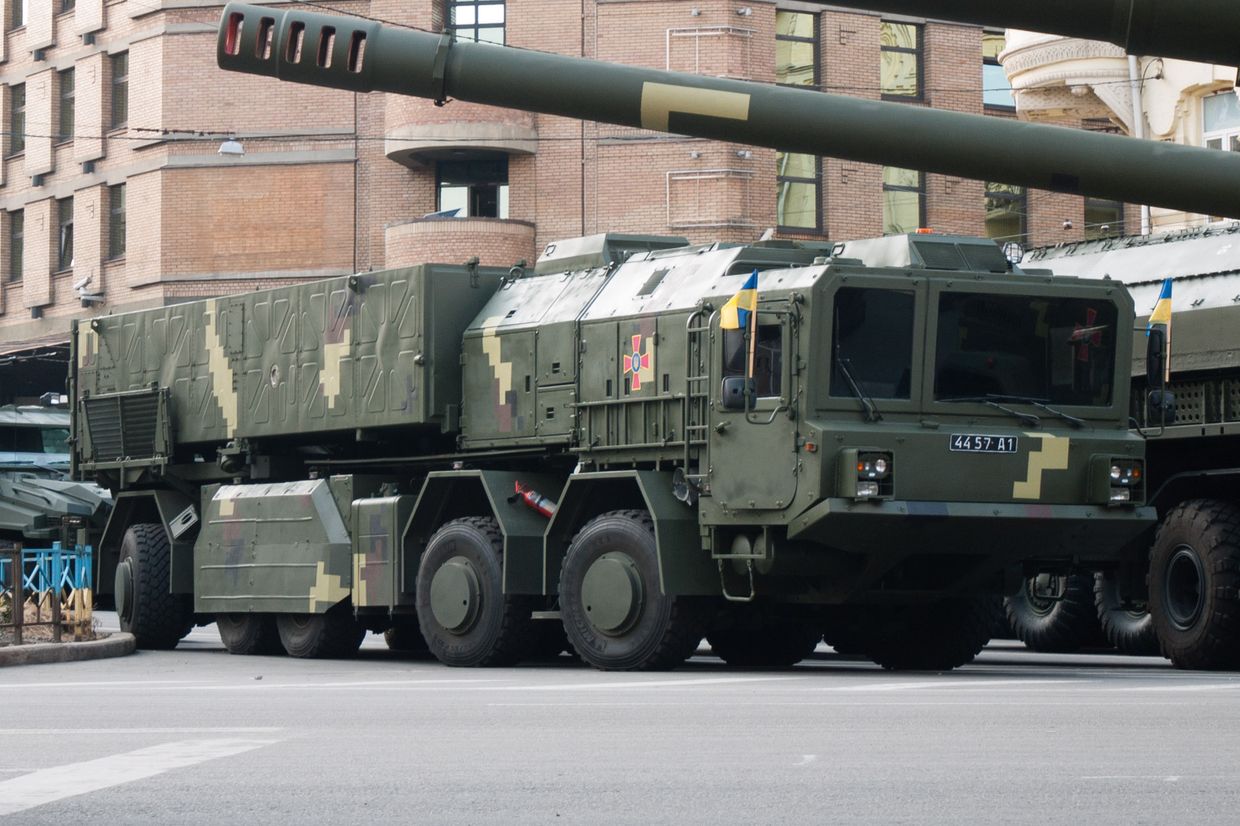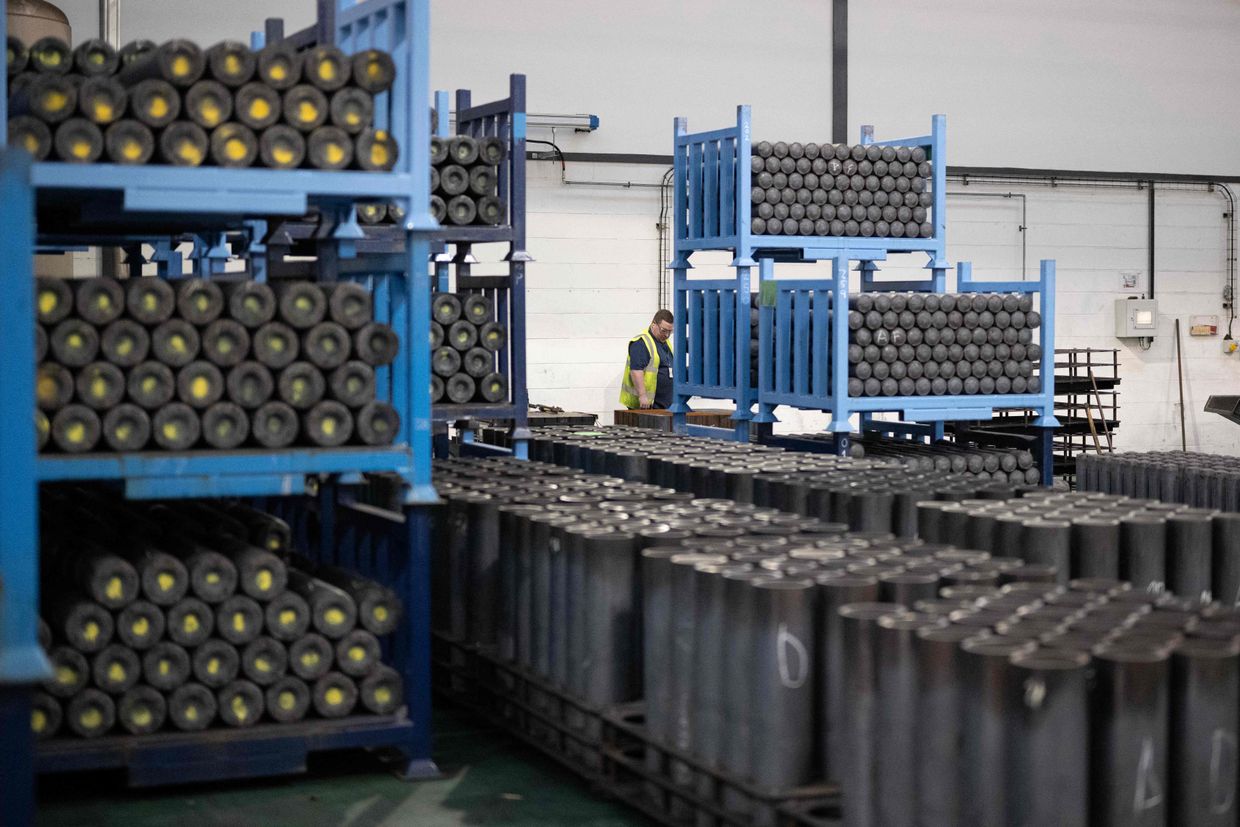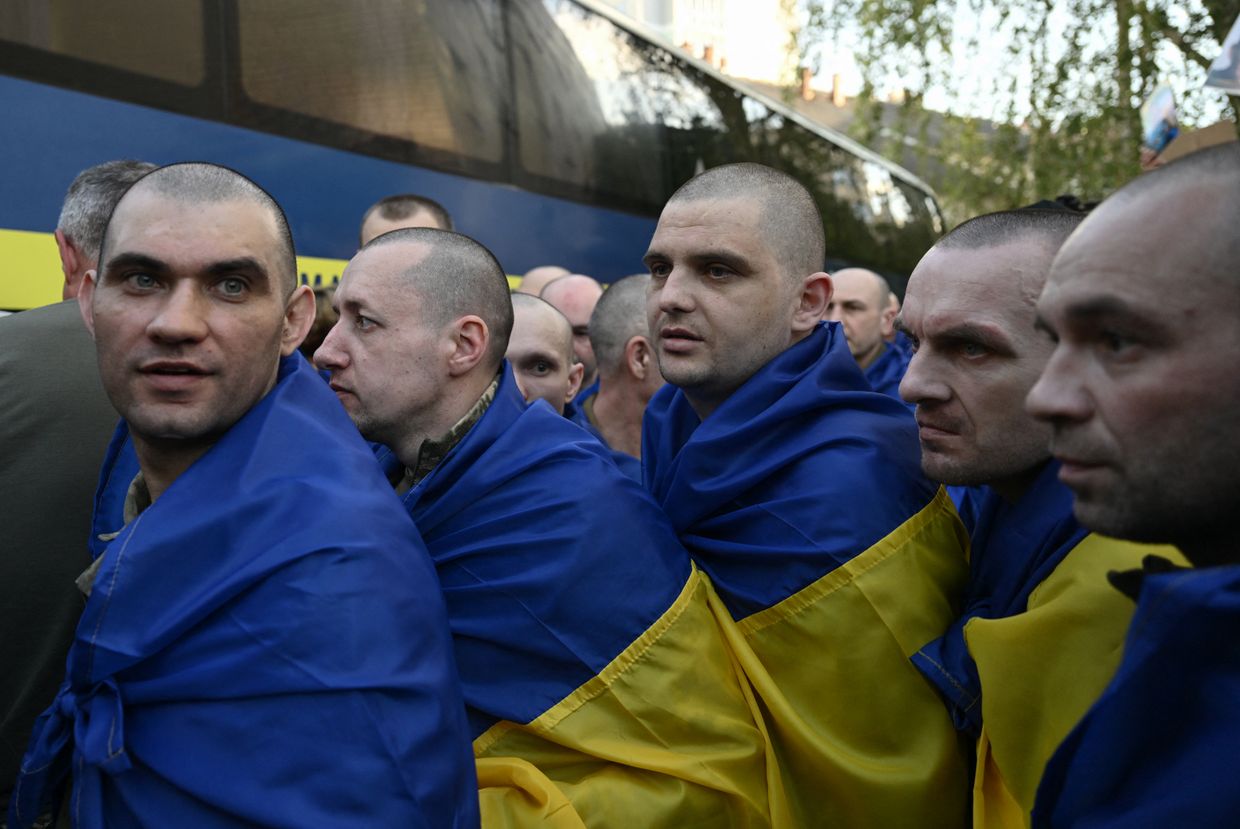Editor’s Note: This article was published by the blog “The Counteroffensive with Tim Mak” on Feb. 22, 2024, and has been re-published by the Kyiv Independent with permission. To subscribe to "The Counteroffensive," click here.

In the first hours of his full-scale invasion, Russian President Vladimir Putin ordered his most elite troops to get behind enemy lines to an airfield right outside Kyiv that was normally used for cargo and flight testing – Antonov Airport in Hostomel. Dozens of helicopters ferried hundreds of Russian airborne soldiers to within striking distance of the capital city’s central district.
Despite courageous efforts by Ukrainian special operators and the National Guard’s 4th Brigade to defend the grounds, by 3:00 p.m. on Feb. 24, 2022, Ukrainian forces were forced to pull back to the strategic site’s perimeter.
This single moment was the point of maximum danger and vulnerability for the survival of the modern Ukrainian state. Having taken the airfield in an air assault, Russian forces now had the opportunity to land massive cargo planes filled with armored vehicles and thousands of troops right in the suburbs of Kyiv. With that ability, the city could fall within hours and, with it, the democratically-elected government.
It fell to Col. Oleksandr Vdovychenko, the commander of Ukraine’s 72nd Brigade, to ensure the Russians couldn’t hold the airfield. But Vdovychenko didn’t have much to work with. He told Valerii Zaluzhnyi, the commander-in-chief of Ukraine’s Armed Forces, that a mere four pieces of 2S3 artillery, Soviet-era guns firing 152.4mm rounds, were en route to firing positions near the airfield. Everything else was still being unloaded from train carriages in Kyiv. Zaluzhnyi ordered that they open fire on the runway as soon as they could – they needed to disable it immediately.
“The Battle for Kyiv could have ended with a Russian victory had they taken the airfield," said Nick Reynolds, a research fellow at the British think tank RUSI. "Russian offensive operations would have been much easier."
During the disorganized, frenzied battle that followed, Ukrainian resistance – and luck – turned the entire tide of the war. This epic, 36-hour battle pierced the idea of Russian military superiority and a quick military victory and prevented Kyiv from falling into Russian hands. It’s why we’re talking about fighting in the east of Ukraine now rather than fighting in the west.
And it’s arguably why President Volodymyr Zelensky is still alive.
The storming of Antonov Airport
It was about 11:00 a.m. when the sound of helicopter rotors began filling the air near Antonov Airport. Still in a state of confusion and denial, both civilians and soldiers near the airfield thought it must be some sort of training exercise.
Russian Ka-52 helicopters patrolled the airspace around the airfield, shooting at everything that moved. Nicknamed “The Alligator” for their battlefield capabilities, these attack helicopters made large, looping circles above the airfield as they fired and prepared for additional attack runs. They fired everywhere, shooting unguided rockets at the airfield, office buildings, buses, and a hangar. There was no discernible strategy or effort to avoid hitting civilian targets.
It was like a scene out of “Black Hawk Down:” soldiers moving effortlessly in unison as they assaulted an airfield operations building, a thick plume of black smoke billowing in the distance, and attack helicopters racing overhead, releasing a burst of flares. Russian troops dashed off helicopters, moving quickly to take control of the control tower and the adjacent airfield administration building.
Only about 200 Ukrainian soldiers had been left to guard the airfield, many of them conscripts who were barred by law from taking part in combat. Most had no experience in battle: a local commander estimated that less than 20 men had seen combat prior to the morning of the full-scale invasion.
The Ukrainian soldiers were also lightly armed: they had an ancient, Cold War-era anti-aircraft auto cannon known as the ZU-23-2 but very little ammunition for it; they had some rocket-propelled grenades, but again, only a handful of rounds. For the most part, they used small arms against the incoming helicopters – a terribly unfair fight.
Lt. Andrii Kulish, a rare combat-hardened soldier with the 4th Brigade of the Ukrainian National Guard who had already spent years fighting Russian troops in eastern Ukraine, was among those troops who tried to delay the Russian advance.
“I cannot say that the guys were panicking,” he recalled. “It’s hard to say why. Maybe they didn’t know what to expect.”
But one thing that the Ukrainian defenders did have was a Soviet-made Igla, a surface-to-air missile launcher. A National Guard soldier specializing in anti-air operations managed to hit a Ka-52, sending it to the earth and boosting the morale of the Ukrainian defenders. It was among the few bright points of that morning. Hours of fighting commenced, with rounds upon rounds of incoming Russian automatic cannon and rocket fire.
Running out of ammunition and about to overrun, the Ukrainian National Guard forces made the decision to withdraw in the early afternoon, getting into a shootout with Russian forces as they did.
While, miraculously, none of these Ukrainian soldiers were killed in combat, Russian forces did manage to capture a number of soldiers who were guarding a radar station and Ukrainian border officials working at the airfield. The Russian troops forced the captured border officials and prisoners of war to collect bodies that day. They said that the number of dead Russians totaled 80 soldiers.
Perhaps surprisingly, the Russians had been confused when the Ukrainians fought back.
“Our guys were interrogated by Russians, and they asked our guys, ‘Why did you shoot back?’” explained Kulish. “So, apparently, they were so brainwashed that they just thought that there would be absolutely no resistance from us.”
Ultimately, a video released at the time showed Russian soldiers unfurling two Russian flags on the roof of a building at Antonov Airport by mid-afternoon.
Ukrainian unpreparedness
How did it even get to this point?
Most Ukrainians to this day will recall how impossible the prospect of a full-scale invasion felt before it happened. A common line of thinking was that the Russians were merely pretending to invade in order to create uncertainty among the international business community and cause trouble for the Ukrainian economy.
This naiveté extended to the Ukrainian government. Zelensky was downplaying the threat of an invasion until almost the very end – he later said it was because he was also concerned about the economy.
Zelensky was hardly alone in his assessment: European officials told Ukraine they didn’t see it as likely and, in particular, it took the Germans so off guard that the chief of their foreign intelligence service was in Ukraine when the full-scale invasion happened, and had to be evacuated by special forces.
Even among those who thought a full-scale invasion was likely, there were doubts that it would target Kyiv. But the Ukrainians can’t say they weren’t warned: CIA Director William Burns visited Kyiv less than two months before the invasion, specifically warning that the Russians would try to seize Antonov Airfield in order to create an air bridge into the Kyiv region, swiftly overthrow the government, and capture the capital.
“Some part of your nature, until the very end, tries to resist it and does not believe that (the Russians) will actually do this,” Vdovychenko explained, citing wishful thinking.
When explosions began on the day of the invasion, virtually none of the brigade was present at their base. Ninety percent of the unit had been deployed to the east: infantry battalions, tanks, artillery, anti-aircraft defenses – several thousand troops were sent away from the critical airfield, ignoring American warnings that it would be the site of a Russian attack.
The Security Bureau of Ukraine (SBU) said that a subsequent investigation revealed that Antonov, the Ukrainian aircraft company that owned the airfield, prohibited the Ukrainian military from building defensive fortifications at the airport before the full-scale invasion.
“We were discussing employee procedures in case there were missile attacks, but the physical capture of the airfield – we were not ready for that,” an Antonov company official said.
Russian arrogance
While the Ukrainians were engaged in wishful thinking, Russian planners were plotting.
“The Russians sought to conduct an air assault to rapidly seize the airport and secure it,” said George Barros, a Russia and Ukraine analyst at the Institute for the Study of War. “Meanwhile, elements of the Russian Central and Eastern Military Districts would drive south from Belarus to Kyiv’s western outskirts and link up with the Airborne forces in Hostomel, relieving them.”
The plan called for 18 enormous Russian strategic cargo planes, IL-76s, to fly to the newly-secured Antonov Airfield with further reinforcements of infantry, armored vehicles, and artillery. There had also been a well-thought-out infiltration plan in which Russia supporters already in Ukraine would help airborne and special operations troops access the capital, less than an hour’s drive away.
The Russian military has a history of airborne assaults, such as when they captured Prishtina Airport in Kosovo in 1999. In 1968, Soviet troops swiftly captured an airport in Prague, allowing large cargo aircraft to arrive and unload tanks to crush the Prague Spring. In both cases – and unlike at Antonov Airfield – they met little to no resistance. And it appears the Russians were counting on that again.
The Russians thought it would be a cakewalk; that they would be met with locals bearing bread and salt, a traditional Slavic welcoming gesture. So confident were they that on the first morning of the full-scale invasion, freshly landed Russian airborne troops were walking casually around the outskirts of Antonov Airport, around 30 kilometers (19 miles) from the heart of Kyiv.
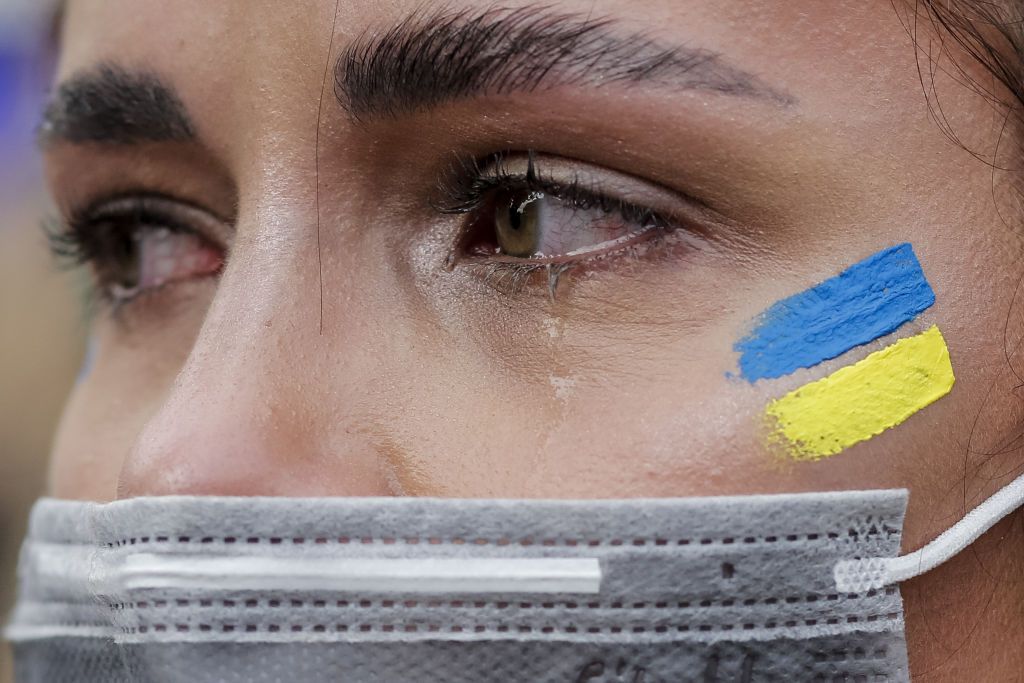
This careless approach would have terrible consequences for Putin’s plan.
Low on ammunition, a convoy of soldiers from the Georgian Legion – a group of foreign fighters supporting Ukraine – were driving around Antonov Airfield, having spent hours shuttling rifle rounds to and from the battlefield.
One Georgian Legion soldier, Mamuka Mamulashvili, watched as Russian troops walked along the airfield's perimeter. Lacking bullets to fire his weapon, he stepped on the pedal in his black 2000 BMW 5 Series, turning his vehicle towards the Russian soldiers on the road.
"It was very chaotic,” he recalled. “So we just pressed the gas and f****d them up."
The Russian soldiers – he said he didn’t count how many – were uninterested in his civilian car up until the moment he ran them over. The bloody story exemplified everything about the haphazard battle in which Russian arrogance met Ukrainian unpreparedness.
Russian troops also fired indiscriminately without clear objectives. Around noon, fighting on the airfield set three aircraft on fire. They had been fully fueled and prepared for takeoff at short notice. Civilian emergency workers rushed over to put out the fire, an airfield official said, and were killed. They were among the first alleged war crimes of the full-scale Russian invasion.
Luck and timing
The result of the Battle of Antonov Airport was, in at least some small part, due to luck and timing.
As soon as his artillery rolled into place near Antonov Airport, Vdovychenko ordered his forces to open fire. A local commander pushed back: “Aren’t our people there?” came the response. Even then, there was a sense of bewilderment that the Russians could be in their backyard. After double-checking that the Russians had taken the airfield, artillery fire began around 5 p.m.
“It was to show them that we can reach out and hit the airstrip so (that they would feel) afraid to land on it,” Vdovychenko explained. “They still had the physical opportunity to do so, but they were afraid to do it because we were showing them that we had clear fire control over the airfield.”
He ordered bridges pre-rigged with explosives to be destroyed to halt any Russian advances. As Ukrainian troops fought to retake the airfield, control of the strategic site switched back and forth.
"F**k, at least one more day, and it would be easier, you know, and we would be more prepared,” he recalled. “One more day. Twenty-four hours. And we didn't have 24 hours."
Ultimately, the defenders on the airfield, and Vdovychenko’s four artillery pieces, bought that crucial time for other forces around Kyiv to prepare. The artillery opened fire, he said, “just in time.”
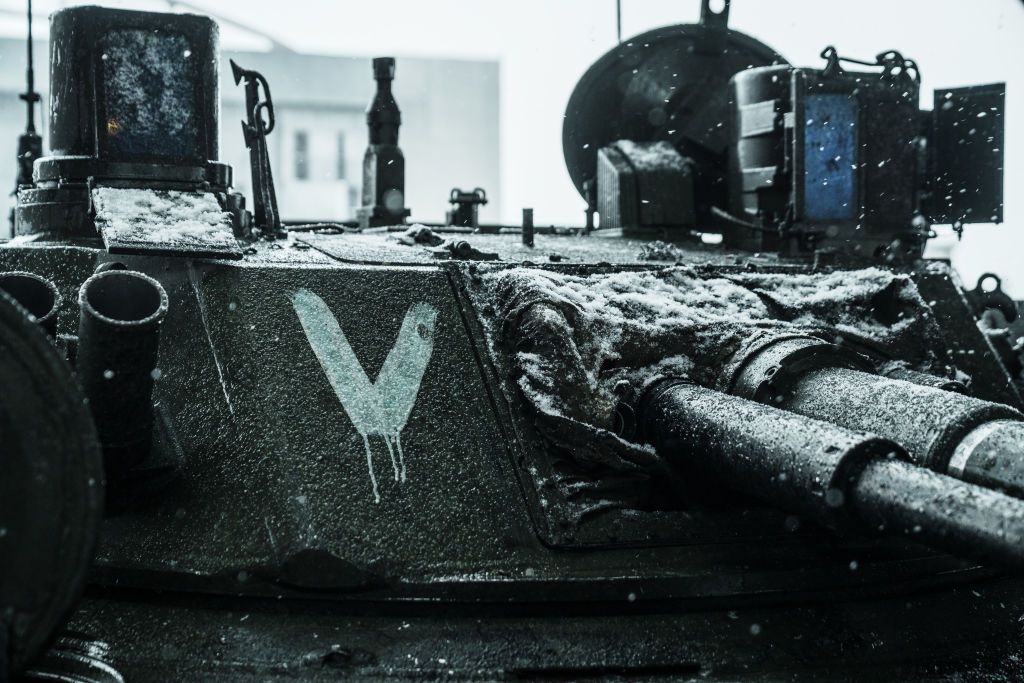
Vdovychenko’s artillery were soon joined by two Ukrainian Su-24 bombers which Kulish saw hit the runway. The blasts damaged the surface of the airstrip, destroyed lighting along the runway, and knocked out navigation equipment. From then on, the airfield was ineffective as a place for the Russian military to land troops and vehicles.
Frantic fighting continued for control of the airfield itself, leading to confusion over who controlled the grounds. As night fell, impromptu groups of Ukrainian volunteers, some armed only with rifles and many without body armor, ambushed and were ambushed by Russian troops around the perimeter of the airfield.
The Ukrainian government was handing out rifles to whoever would take them at this point, and one senior Ukrainian officer said that in the initial days, “there were random civilians firing at Russians.”
“I have goosebumps (recalling this) because, for me, the most important thing wasn't even the technical aspects of a single battle… It was just this spirit that everyone was together… everyone wants to f**k (the Russians) up at that moment,” Vdovychenko said. “For the Battle of Kyiv, it was just us. There were no individuals. It was just us. That was the great thing about it.”
Ukrainian staff on the airfield had made a critical decision that would buy time: they opted to block the airstrip with large trucks and vehicles all along the runway, so it would be impossible for anyone – Russian or Ukrainian – to land or take off quickly. The Russian IL-76s cargo planes that were to bring in an additional thousand troops, along with armored vehicles, turned around mid-air and returned to Belarus.
Saving Kyiv
Russian forces ultimately took control of Antonov Airport, but their tactical victory was also an extremely costly one. The time spent fighting for control of it allowed Ukrainian forces to build up defenses of the city and for Vdovychenko to bring more armored vehicles and artillery to the fight for the broader Battle for Kyiv.
The battle took around 36 hours and effectively ended with the Russians taking control of a disabled airfield, rendered useless by Ukrainian attacks.
The occupation of the airfield lasted much longer: until early April. During the period, some of Russia’s best troops were worn down by relentless ambushes and attacks. Long columns of Russian vehicles were stuck in traffic jams, stuck in rough terrain and under constant harassment by Ukrainian anti-tank teams.
Russian generals quickly learned that they would not be taking Kyiv in 72 hours. It took another month and a half to learn they wouldn’t be taking Kyiv at all.
After the Battle of Antonov Airport, Ukrainian forces retreated south to the other side of the Irpin River to hold the Russians away from the center of the capital.
Tatiana Slesareva, a retired math teacher living near the airfield, counted 36 helicopters the morning the battle kicked off. She spoke often with the young Russian soldiers who walked by her home – they were shocked that the Ukrainians were not prepared to accept their “liberation.” One time, she spoke to a Russian commander whose troops had just come back from a bruising defeat.
“He started to speak to me in this hostile manner. ‘Do you know what happened? I have a friend left behind there, in a tank. His legs were ripped off!’” she recounted. “What have we done to you? We came to liberate you!”
Tatiana stood her ground, telling the commander, “Why did you come here? This is our homeland. Obviously, we’re going to defend it.”
The period left her with terrible mental scars. As we talk about the period of occupation, when she was without electricity, gas, or information from the outside world, she lets out these involuntary grunts and moans. This is more than a year later.
One day during the occupation period, she felt that something was off: the dogs weren’t barking, and even the chickens in the yard were silent. The normal screech and whine of vehicles and tanks were absent. At first, they were too petrified to do anything – but three days passed, and she told her husband that they should walk around to see what they could find out.
“I saw eight people walking towards me,” she said. From a distance, she couldn’t tell who they were – Russian or Ukrainian.
“And I asked them, ‘Are you ours?’” she recalls. “And they responded, ‘We are yours.’ And then I started to cry uncontrollably… it was impossible for me to talk.”
They had been liberated.
Ukrainian forces rushed to retake Antonov Airport, abandoned by retreating Russian forces who abandoned the city, concluding the Battle for Kyiv. The Ukrainians had, by sweat and blood, pushed the invading force out.
The fact that Russia did not manage to take Kyiv comes down to three events, none of which were coordinated:
First, the Antonov Company put trucks out on the runway, preventing massive Russian cargo planes from landing. Second, the unprepared and understrength Ukrainian defenders of the airfield did just enough to repel the initial waves of the Russian assault, preventing the clearing of the runway. Finally, Ukrainian commanders belatedly recognized how vulnerable the airfield was and ordered its destruction through bombardment, greatly reducing its value to the Russian military.
The battle had enormous strategic consequences, among them a message to the Russian military and the world that Ukrainians would resist the Russian military ferociously. The combat at Hostomel Airfield also blunted Russian momentum and the advantage of surprise – ultimately leading to Russians failing to encircle Kyiv, decapitate the government, or control the capital city.
It wasn’t neat or pretty, but the disorganized defense of the airfield showed Ukrainian will against extraordinary odds. It exemplified the national spirit in those early days of war. And it’s the reason why Ukrainians still control Kyiv today.
Ross Pelekh, Alessandra Hay, and Myroslava Tanska-Vikulova contributed to this story.





